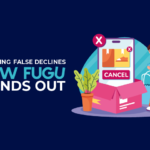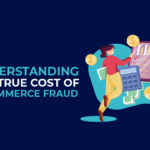In most cases, a chargeback is when a financial institution reverses a fraudulent debit card transaction. So are return item chargebacks the same as regular chargebacks?
Misleadingly, return item chargebacks aren’t what you might think they are.
Allow us to explain.
What Is and Is Not a Return Item Chargeback
Unlike a chargeback that an account holder lodges to dispute an illegitimate or fraudulent credit card charge, a return item chargeback is a fee charged to a banking customer once they deposit a check that bounces.
To make things even more confusing, there isn’t even a universally accepted term for this occurrence.
How Banks Define “Return Item Chargeback”
To hear it straight from the horse’s mouth, let’s look at how one of the biggest bank in the US, the Bank of America, defines a return item chargeback on a check. Their returned payment definition is:
We charge this fee each time a check or other item that we either cashed for you or accepted for deposit to your account is returned to us unpaid.
Here are a few more names that you’ll often see banks use to categorize this type of fee:
- Deposited item returned fee
- Cashed item returned fee
- Rejected check fee
- Rejected item chargeback
- Bounced check fee
- Return of deposited or cashed item fee
How Return Item Chargebacks Affect Merchants
Although becoming less and less commonplace, customers will sometimes prefer to pay for your products or services with a check. While depositing a customer’s check, there may come a time when that customer doesn’t have sufficient funds in their account and the check bounces. If this happens, not only will the person who issued the check be charged a fee by their bank, but your business account is also likely to be charged as well.
Fraudulent vs. Legitimate Return Item Chargebacks
Thankfully, return item chargeback fees are fairly easy to spot. Once you’ve deposited a check, the amount designated will appear in your bank account. If the deposited check is returned unpaid, this amount will be withdrawn from your account with the addition of a fee – usually $10-15. For example, if a check worth $189.50 bounces, the bank will withdraw the money plus the fee. So, in this case, a fee of $10 would make the withdrawn amount $199.50.
Unfortunately, though, return item chargebacks are an area of the banking system that nefarious individuals often take advantage of. Therefore, it’s important to keep a keen eye on your business account for any fraudulent activity. If you suspect fraudulent activity happening to your account, contact your bank with the relevant information as soon as possible.
Can Fraudulent Chargebacks Be Disputed and Prevented?
Return item chargeback fraud is not a new practice, but it is a growing threat to businesses. The good news is that there are steps that companies can take to prevent and dispute return fraud.
To read more about how fraudulent chargebacks can be disputed, and ultimately prevented, see our Tips to Prevent E-Commerce Chargebacks.




